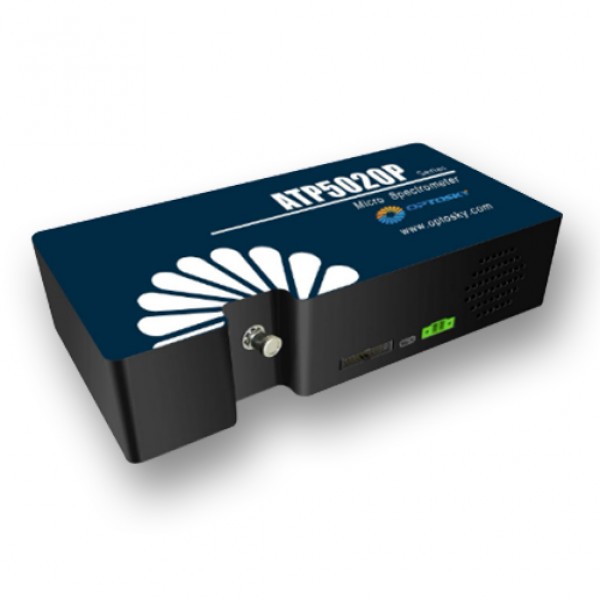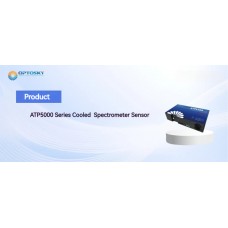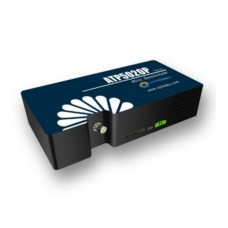- ATP5020P is a high-performance micro raman spectrometer developed by Optosky. It uses a 2048*64 pixel cooled linear CCD. The CCD uses semiconductor external cooling technology. The CCD can work in a set constant temperature environment (cooled down to -5C), which greatly reduces The noise of the sensor achieves an excellent signal-to-noise ratio (about 3 times higher than that of its competitors), and it improves the measurement reliability of the ATP5020P, and the measurement results do not change with the ambient temperature.
- At the same time, Optosky specially customized ultra-low noise CCD signal processing circuit for ATP5020P, its quantization noise is less than 15counts, which is a high level in the industry.
- The ATP5020P accepts SMA905 fiber input or free-space light and outputs measured spectral data via a Type-C or UART port.
- The ATP5020P requires only a 5V DC power supply and is very easy to integrate.
| Detector | |
| Detector type | 180-1180 nm |
| Effective pixels | 2048*64 |
| Detector model | TE-cooled back-illuminated linear array CCD (cooling to -5C) |
| Sensitivity | 6.5uV/e- |
| Dark noise | 6e- |
| Range Drift | ~600 ke- |
| Pixel size | 14μm×14μm |
| Optical parameter | |
| Focal distance | 77.5 mm for incidence / 111.6 mm for output |
| Optical resolution | 0.2-3 nm (Depend on wavelength range, slit width.) |
| Dynamic range | 50000:1 |
| Working temperature | -10℃ to +40℃ |
| Working humidity | <90% |
| Trigger | YES/IN and OUT |
| Wavelength range | 180-1180nm |
| SNR | >900:1 |
| Optical Design | f/4 crossed, asymmetrical C-T |
| Physical parameters | |
| Size | 170×110×52 mm |
| Weight | 1.6kg |
| Sealing | Anti-sweat |
| Electrical parameter | |
| A/D conversion resolution | 18 bit (Output 16bit) |
| Integration time | 10ms - 60 seconds |
| Interface | type-c |
| Supply voltage | DC 5V±10% |
| Storage temperature | -20°C to +70°C |
- Detector: Back-illuminated CCD (cooled down to -5C).
- Pixels: 2048*64
- Wavelength Range: 200-1100 nm.
- Optical Sensitivity: 0.2-3 nm (Depend on wavelength range, slit width).
- Optical Path: Crossed C-T.
- Integration Time:10ms-60s.
- Supply Voltage:DC 5V±10% @ <2A.
- 18 bit, 250KHz A/D Converter.
- Interface:SMA905 or free.
- Trigger: Type-C or UART.
- 20-pin dual-row programmable external expansion interface.
- Use in micro raman spectrometer;
- Trace, fast spectrophotometer can use it for better user;
- Perform spectral analysis / radiation spectrometry / spectrophotometric analysis;
- Transmittance, absorbance detection;
How to choose micro raman spectrometer?
ATP5020P is a high-performance back-thinned TE cooled micro raman spectrometer developed by Optosky. It uses a 2048*64 pixel cooled linear CCD. The CCD uses semiconductor TE-cooled technology. The CCD can work in a constant temperature environment (-5C), which greatly reduces The noise of the sensor achieves an excellent signal-to-noise ratio (about 3 times higher than that of its competitors), and it improves the measurement reliability of the ATP5020P, and the measurement results do not change with the ambient temperature.
At the same time, Optosky specially customized ultra-low noise CCD signal processing circuit for ATP5020P, its quantization noise is less than 15counts, which is a high level in the industry.
The ATP5020P accepts SMA905 fiber input or free-space light and outputs measured spectral data via a Type-C or UART port.
The ATP5020P requires only a 5V DC power supply and is very easy to integrate.
What is the detector used for the ATP5020P?
The ATP5020P uses Hamamatsu s11850 with good uv response.
What is the most popular application for the ATP5020P?
It is the micro spectrometer used for raman spectrometer?
How to choose Optosky TE-cooled spectrometer series?
ATP5100 Ultra-miniature, Cooled BT CCD, sized up to a coin.
ATP5040 crossed C-T, TE-cooled 4096 pixels CMOS external cooling, high sensitivity
ATP5020P crossed C-T, Hamamatsu CCD cooled, higher sensitivity, SNR & dynamic range is higher than Maya.
ATP5030P M-shape C-T, higher resolution and low stray light, Hamamatsu CCD
ATP5030 (2048pixels) & ATP5034 (4096pixels) CMOS+TE-cooler, M-shape C-T, high resolution
ATP5330 (2048pixels) & ATP5334 (4096pixels) Thin, cooled CMOS+TE cooled, M-shape C-T, super high resolution
How many topology structure of optical path for a spectrometer?
There are commonly divided into 4 types of optical path, including crossed C-T, M-shape C-T, concave grating optical path, transmittance grating opitcal path.
Crossed C-T: ATP2000P,ATP2002, ATP2400, ATP1010, ATP5020P, ATP5040, ATP6500
M-shape C-T: ATP3030, ATP3034, ATP3330/4 ATP5030, ATP5034, ATP5330/4
Concave grating: ATP4230, ATP4020, ATP4050, ATP4070
let's see the M-shape optical path looks like a number "3", so our models uses the 3rd number "3" to indicate M-shape optical path models.
In generally, topology structure can decide resolution, sensitivity, stray light, and size of a spectrometer.
Crossed C-T topology structure employs better sensitivity and compact size.
M-shape C-T employs higher resolution and better stray light.
Concave grating optical path employs high stray light.










